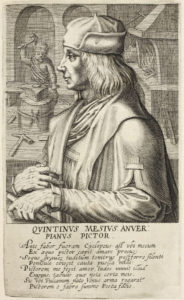
23. Quentin Matsys
Before I used to be a Cyclopean smith, but when a wooing painter began to love on an equal footing with me, and the cautious girl objected to me that she liked the heavy thundering of hammers less than the silent paintbrush, love made me a painter. A tiny hammer, which is the sure note of my paintings, alludes to this. Thus, when Venus had asked Vulcan for arms for her son, you, greatest of poets, made a painter out of a smith. Continue Reading 23. Quentin Matsys
View →
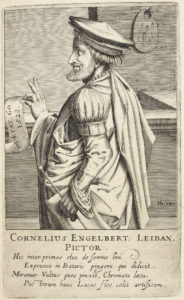
25. Cornelius Engebrechtsz
“This man was among the first of the Dutch who learnt to paint with pressed oily seed of flax. We wonder at the faces [and] joyful colours which he painted. Lucas, the flower of painters, frequented this artist.” Continue Reading 25. Cornelius Engebrechtsz
View →
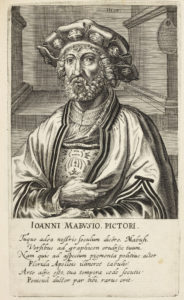
27. Jan Gossaert, called Mabuse
You too, indeed, man of Maubeuge, will be said in our verses to have educated your age in drawing. For who else could daub Apelles’ boards with flowering pigments smoother to the eye? Granted, you yield in skill to others who followed your age. [But] rare will be the guider of the brush who is equal to you. Continue Reading 27. Jan Gossaert, called Mabuse
View →
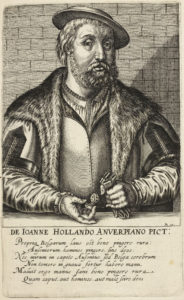
29. Jan van Amstel
The proper praise of Belgians is to paint fields well; that of Italians to paint men or gods. Nor is it surprising: not without reason is the Italian said to have his brain in his head, [while] the Belgian [has his] in his active hand. Jan’s hand, then, preferred to paint fields well, than for his head to know poorly either men or gods. Continue Reading 29. Jan van Amstel
View →
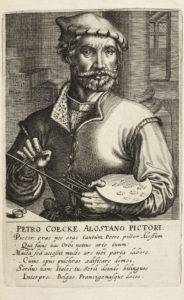
31. Pieter Coecke van Aelst
You were a painter, but, Pieter, you were not only a painter, you who made your Aelst more known to the world by this skill. But there was much skill in addition, born to you by much labour. Its office was to build beautiful houses. Serlio taught this to the Italians, then you, bilingual interpreter of Serlio, taught the Belgians and the French. Continue Reading 31. Pieter Coecke van Aelst
View →
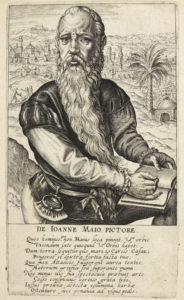
33. Jan Vermeyen
“What men, what places and what cities has Vermeyen not painted? –– and whatever the world, far and wide, has worth seeing – while he followed you on land and sea, Emperor Charles, to paint the mighty deeds of your hand. These soon shone in gold with Attalian embroidery, although the artist’s hand was greater than the material. Nor did he provide a sight less pleasing to you than his art – [he was] remarkable for his high forehead, [and] was ordered to show off the unhidden folds of his rich beard, hanging down to his feet.” Continue Reading 33. Jan Vermeyen
View →
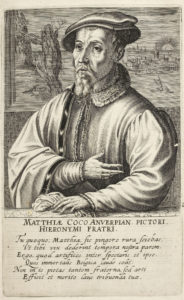
35. Mathys Cock
You too, Matthias, knew how to paint fields in such a way, that our age has scarcely produced your equal. Therefore, if you too are considered among the artists whom Belgium honours with immortal praise, not only fraternal piety grants this to you, but also the praise justly due to your skill. Continue Reading 35. Mathys Cock
View →
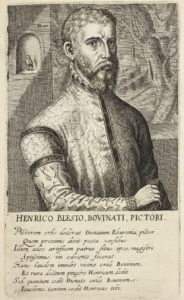
37. Henri Met de Bles
The Eburonian city had produced the painter of Dinant, the painter of whom the poet spoke in recent verses. The most favourable site of his homeland had made him entirely an artist, and a master hardly taught him. Tiny Bouviges was jealous of this its neighbour’s glory and produced Hendrik, learned in painting fields. But, Joachim, as much as tiny Bouviges yields to Dinant [in size], so much does Hendrik yield to you. Continue Reading 37. Henri Met de Bles
View →
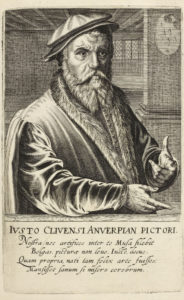
39. Joos van Cleve
Our muse shall not keep silent about you, among the Belgian artists, Joos, [you who are ] no trivial glory of painting. You would have been as happy in your son’s art as in your own, if only the wretch’s brain had remained healthy. Continue Reading 39. Joos van Cleve
View →
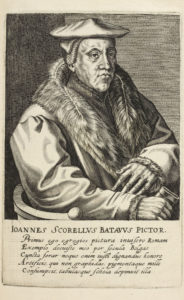
41. Jan van Scorel
Through all centuries I shall be said to have been the first to have taught by my example the excellent Belgians to be envious of Rome in painting. For he is not worthy of the honour of a true artist, who does not use up a thousand pencils and pigments, and paint pictures in that school. Continue Reading 41. Jan van Scorel
View →











